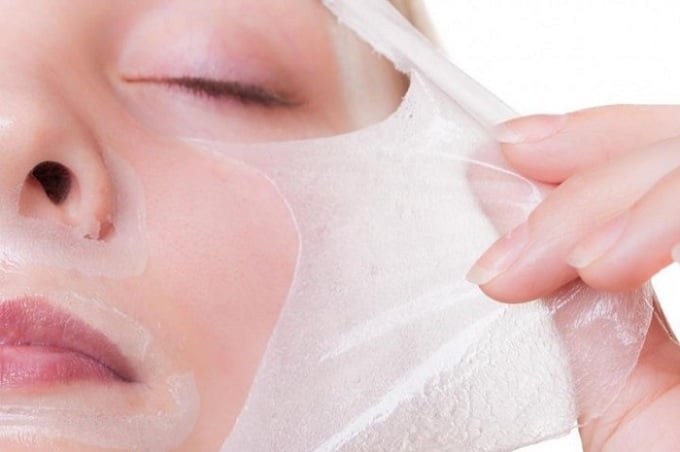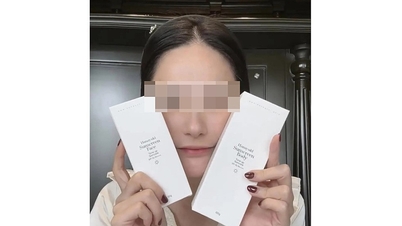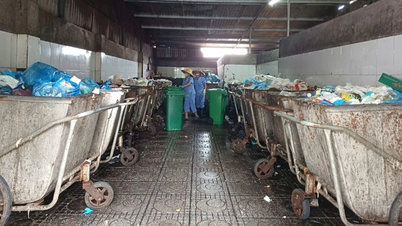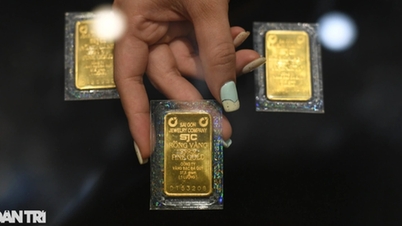Using quick skin peeling and whitening products at home can bring immediate results but can easily irritate the skin, erode and weaken the skin's protective barrier.
Thao, 25 years old, living in Binh Thanh, shared that she had always used reputable branded skin care products, but due to her busy work schedule, she did not maintain regular use, causing her skin to darken. An acquaintance recommended a quick skin whitening cream, which would whiten her skin after 1-2 weeks, so Thao decided to buy it and try it out.
After only two days, the woman's skin began to itch, burn, and show signs of peeling. Even though she had stopped using the product for 6 months, Thao's skin became sensitive, with many red pimples, requiring treatment with oral and topical medications to improve. Not to mention, she always felt tired, stressed, and irritable because of the criticism from people around her. Thao's skin has improved, but is no longer as healthy and beautiful as before.
"After that horrible experience, I don't dare to use peeling and bleaching products indiscriminately anymore," the woman said.
According to Dr. Tran Ngoc Khanh Nam, Department of Dermatology - Skin Aesthetics, University of Medicine and Pharmacy Hospital, Ho Chi Minh City, home-made instant skin whitening creams often have unclear origins. Last month, Dr. Nam also treated a 40-year-old female patient with facial swelling, many red spots and yellow discharge after 7 days of applying instant skin whitening cream.
The doctor diagnosed allergic contact dermatitis and prescribed anti-inflammatory drugs, topical antibiotics, and anti-allergy medications. After improvement, he was instructed on home care and skin moisturizing to help the skin recover.
The patient said she bought a jar of instant skin whitening cream online, after applying it, itching and red rash appeared on the skin area that came into contact. When she contacted the seller, she was told that this was a "normal reaction, it will go away in a few days". However, the swelling got bigger and bigger, accompanied by burning and itching, causing the woman to worry and go to the hospital.
According to Dr. Nam, the ingredients of these creams contain corticosteroids, hydroquinone, mercury, and possibly some other skin-peeling substances. Corticosteroids can cause skin atrophy, stretch marks, contact dermatitis, and acne, while hydroquinone causes blue-black hyperpigmentation. In addition, mercury causes systemic poisoning symptoms such as fatigue, loss of appetite, swelling of the toes and ankles, edema around the eyes, and kidney damage.
In addition, using chemicals to exfoliate actually peels off the outermost layer of the skin and all the skin's protective factors. At this time, you feel your skin is white immediately, but over time, your skin will become thin and weak, peeling, acne, and rash.

Using products of unknown origin to peel and bleach can cause skin damage, darkening, infection and bad scarring. Photo: Healthy
Sharing the same opinion, Dr. Tran Nguyen Anh Tu, Head of the Department of Dermatology, Ho Chi Minh City Dermatology Hospital, said that the hospital received many cases of severely damaged skin due to the use of poor quality cosmetics of unknown origin, known as "mixed creams".
Most of these products contain ingredients that are harmful to the skin such as mercury and corticosteroids, and are made by the sellers themselves, mixed at home, or produced by small establishments. The selling price varies from tens of thousands of dong to tens of millions of dong, but doctors warn that "it does not mean that a high-priced product is safe". Many people do not even know that the cosmetics they are using are "mixed creams" until they have skin problems and go to the hospital for examination.
According to Dr. Tu, mercury or corticoid ingredients have the effect of beautifying the skin quickly. However, after a period of use, the skin becomes thinner, red blood vessels appear, dark spots and acne appear; the skin also becomes very sensitive, often itchy, stinging... When you stop applying the cream, the skin damage continues. Patients have the phenomenon of "addiction to mixed cream", the skin becomes darker, acne or itchier when they stop using it.
Normally, skin damaged by peeling can be treated to recover slowly, depending on the initial level of damage and the patient's compliance with treatment. Treatment includes using drugs to soothe the skin, reduce irritation, and restore the skin's protective barrier. When the skin is stable, the doctor can intervene with other procedures such as electrophoresis, micro-injection, and fractional laser to help rejuvenate and increase collagen production to restore the skin... However, the treatment time is often long and many cases cannot recover as before.
Experts recommend that women should take care of their skin regularly by moisturizing, cleaning, and applying sunscreen. Supplement fruits, green vegetables, and juices to provide vitamins. Do not smoke, use stimulants, and limit sweet and greasy foods. Beauty takes time, do not undergo quick beauty overhauls, use poor quality services, or buy products floating online. If you want to regenerate your skin, you should go to a reputable medical and cosmetic facility to control the acid concentration suitable for each skin type and each disease, and limit side effects.
America and Italy
*Character names have been changed
Source link





























![[Photo] Panorama of the Patriotic Emulation Congress of Nhan Dan Newspaper for the period 2025-2030](https://vphoto.vietnam.vn/thumb/1200x675/vietnam/resource/IMAGE/2025/11/04/1762252775462_ndo_br_dhthiduayeuncbaond-6125-jpg.webp)

![[Photo] Opening of the 14th Conference of the 13th Party Central Committee](https://vphoto.vietnam.vn/thumb/1200x675/vietnam/resource/IMAGE/2025/11/05/1762310995216_a5-bnd-5742-5255-jpg.webp)













































































Comment (0)